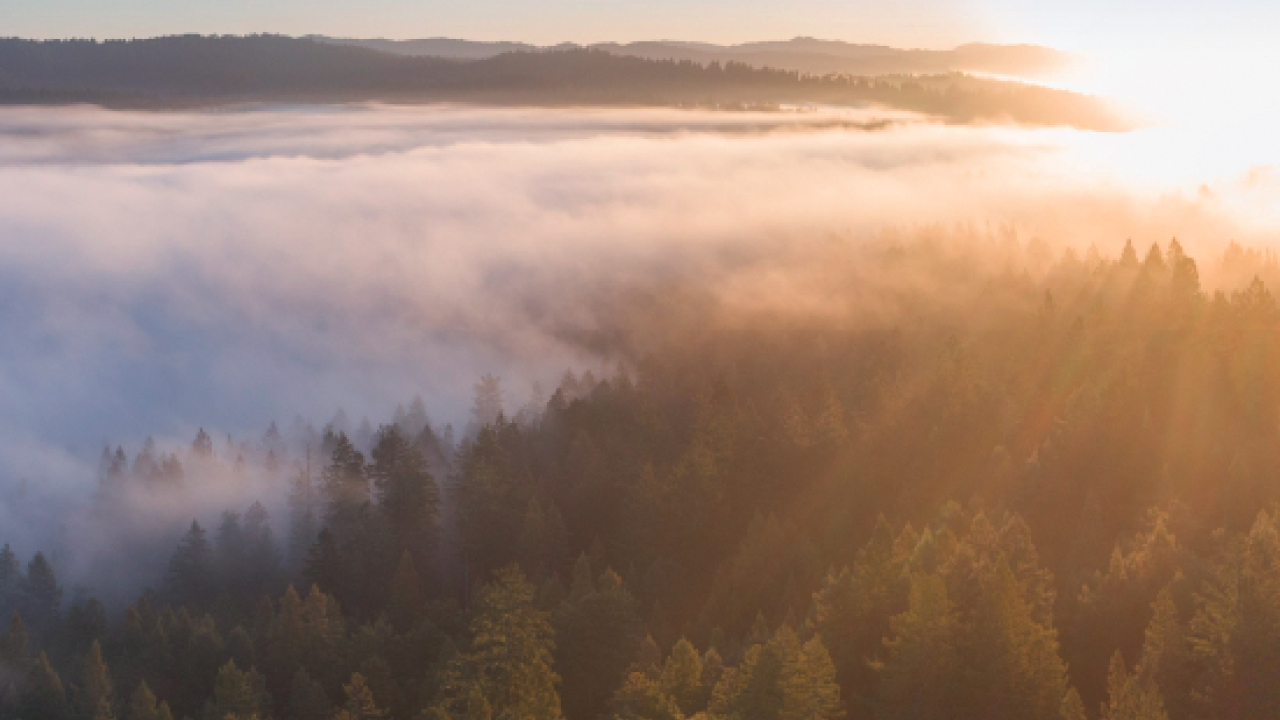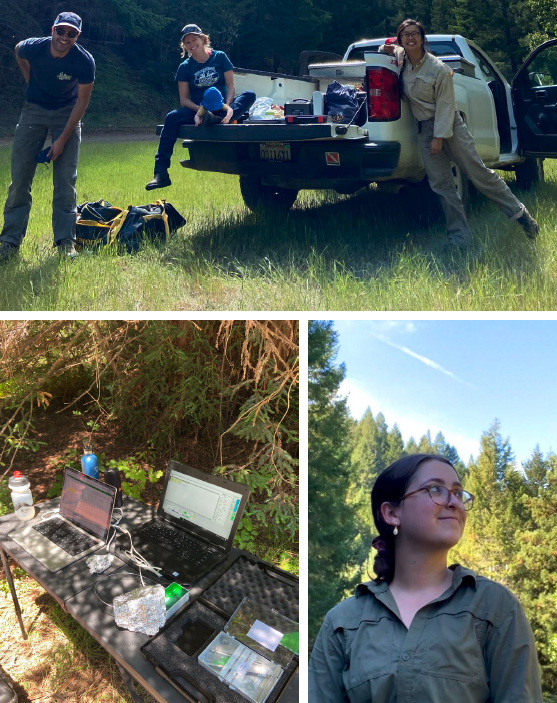
Redwoods work featured in North Coast Forest Conservation Initiative Annual Review
Quick Summary
- Article pasted from The Conservation Fund 2022 Annual Review. Here they describe our CalFire funded project: CARDI-C (CArbon Dynamics Investigator for California), which Lily Klinek and Jessie Au are working on.

How can we measure forests' photosynthesis?
Future efforts to ‘firmly establish California’s forest as a more resilient and reliable long-term carbon sink’ (California Forest Carbon Plan 2018) rely on objective and accessible quantifications of carbon sequestration and storage across the state. Forest health and growth depends on each tree’s ability to photosynthesize — the process by which plants use sunlight to synthesize nutrients from carbon dioxide and water. A healthy forest grows faster (having a higher photosynthetic rate) than an unhealthy one, which may be combating insects, disease or drought. Higher growth rates lead to more carbon being stored long-term within the trees, effectively removing harmful carbon emissions from the atmosphere and helping to mitigate climate change.
The CARbon Dynamics Investigator for California (CARDI-C) project has established a diverse research team, including University of California, Davis; the NASA Jet Propulsion Laboratory; forest conservation non-profits like The Conservation Fund; and tribal communities like the Yurok Tribe. Two members of the CARDI-C team — Lily Klinek, Ph.D. student in Ecology at UC Davis, and Jessie Au, postdoctoral scholar at the UC Davis Department of Plant Sciences — have been conducting field measurements of redwood photosynthesis at Big River Forest and Garcia River Forest. Coastal redwood forests are the most productive ecosystems in California, storing the highest amount of carbon per unit area.
Every two weeks, they go into the field and use computers and portable lab equipment to measure redwood photosynthesis at the leaf level, along with environmental conditions such as temperature and humidity. They will combine these field measurements with computer-based, large-scale models and satellite remote sensing data to help answer essential questions about the California carbon cycle, including where, when, and to what extent forests in California will remove and store carbon from the atmosphere in the future.
In particular, the measurements in the redwoods will help assess and calibrate remote sensing estimates of carbon sequestration in redwood forests. In addition, the CARDI-C project will investigate the environmental drivers in carbon uptake using information on weather conditions to predict how the carbon cycle of California’s forests will change in the future. When completed, the model outputs and forest carbon maps will be made publicly available through an open-source web platform, enabling land managers to evaluate current management strategies and understand how forest carbon storage might change in the future.
-from page 8 of of The Conservation Fund's North Coast Forest 2022 Annual Report